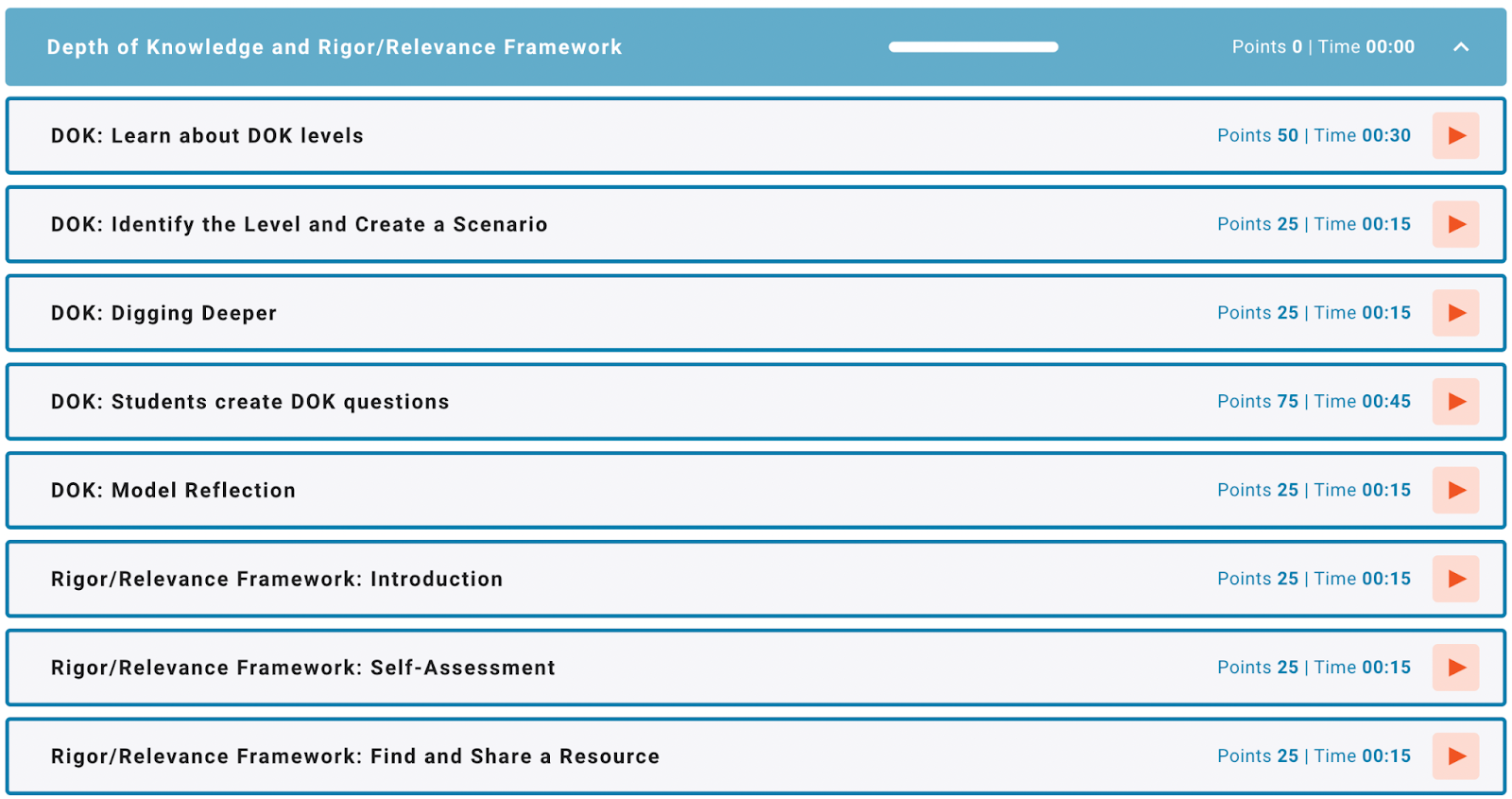Quick Tip Wednesday: How to Set Up a Gratitude Month
Welcome back to Quick Tip Wednesday!
5 min read
Julia Francis : Aug 28, 2022 4:00:00 PM

“To know that we know what we know, and to know that we do not know what we do not know, that is true knowledge.” Nicolaus Copernicus
Thinking is hard work. Even the best students may feel fatigued after a period of intense brain activity and that can make it difficult for teachers to help students learn at a high level that pushes them academically without wearing them out. One thing that can help is categorizing tasks according to the complexity of thinking required to complete them by using Webb’s Depth of Knowledge.
At Alludo, we specialize in creating professional learning environments for educators and staff that provide access to tools they can use to connect with students and improve their learning. Webb’s DOK is part of our Alludo content catalog. Here is an overview of Webb’s DOK and 20 DOK questions for teachers to consider.
Webb’s Depth of Knowledge is a system developed by Dr. Norman Webb in 1997. Its purpose is to categorize activities according to the complexity of thinking required to complete them. There are four levels of rigor in the DOK:
/AL_11-Blog07-2.jpeg?width=450&name=AL_11-Blog07-2.jpeg)
Webb’s Depth of Knowledge is a framework that educators can use to assign tasks at an appropriate level that doesn’t overtax students and leave them without the cognitive energy to complete their work.
You may have seen a DOK wheel chart that has become popular. Dr. Webb did not create the DOK wheel and has discouraged its use as he believes that it oversimplifies the process of managing tasks by making teachers believe they can simply change a verb in the description of the task to make it more or less taxing.
Teachers find Webb’s Depth of Knowledge useful for several important reasons, but the most important thing to know is that it helps teachers avoid overwhelming students with too much intellectually rigorous work. Here are some of the benefits of DOK for teachers.
Creating lesson plans is difficult work. Using Webb’s DOK can help teachers understand how students learn and which tasks require the most rigor and design their lesson plans accordingly.
Teachers can also use Webb’s DOK to evaluate existing lessons, define the amount of rigor required for them, and gauge whether learning is at the right level to support learning.
Using Webb’s DOK to create and evaluate student lessons can boost student engagement because it reduces the likelihood that students will get worn out during a lesson or lose focus on a task. In that way, it can also support future learning because students who aren’t overusing their intellectual resources will be set up for better learning going forward.
When teachers use Webb’s Depth of Knowledge as a tool to create lessons and evaluate them, they are building teaching skills that will make them better teachers and thus, benefit their students. Consistent use of DOK can make it easier for teachers to design lessons that develop critical thinking in their students and that sets students up for future academic success.
Writing lesson plans and developing lessons requires a lot of creative energy on the part of teachers. Webb’s DOK gives teachers a framework to create lessons and using that framework can actually allow teachers to think more creatively about their lessons. Designing lessons at multiple levels gives teachers the opportunity to flex their creative muscles and have fun with lesson planning.
/AL_11-Blog07-3.jpeg?width=450&name=AL_11-Blog07-3.jpeg)
Finally, using the DOK helps teachers to build evaluative skills that they can use in multiple aspects of their jobs. They may, over time, be able to evaluate lessons more effectively and recognize signs of intellectual fatigue in their students.
Is it appropriate to use Webb’s Depth of Knowledge to create lessons in any subject or is it best suited for some and not for others?
The first thing you should know is that Webb’s DOK was originally developed for use in math and the sciences. When we review some of the levels, it’s easy to see why. In a science classroom, students might begin with memorization and recall of a new concept and later, move into predicting the results of an experiment. After that, they might design an experiment and analyze the results, thus moving through all four stages of the DOK.
However, DOK can be used in any subject because every subject that students learn incorporates tasks that require varying levels of cognitive rigor.
An example of how an ELA teacher could design lessons at each level might look like this:
While teachers can certainly use Webb’s DOK in any subject they teach, the most common use is in assessment creation by states. A state might use Webb’s DOK to formulate questions on a standardized test to determine whether students have met state standards.
Teachers can also use the DOK framework to evaluate their lesson plans and confirm that students are exposed to tasks at each level. We should note here that Level 1 and Level 2 assessments are the easiest to make since grading Level 3 & 4 assignments may take more time and be less objective as a measure of student progress.
One of the best ways for teachers to use Webb’s Depth of Knowledge is to break down questions for students into each of the four categories. Here are 20 DOK questions for teachers to use at each level:
/AL_11-Blog07-4.jpeg?width=450&name=AL_11-Blog07-4.jpeg)
These examples are illustrations of the kinds of things teachers might ask of students at each DOK level.
At Alludo, we believe in giving teachers all the tools they need to help students learn and develop strategic thinking. It’s for that reason that we have included courses related to Webb’s Depth of Knowledge and Rigor in our Alludo content catalog.
Teachers who have a strong understanding of Webb’s DOK and how it works are empowered to use it to their advantage when assessing students, developing lesson plans to build strategic and complex thinking, and encouraging student engagement at every level.
To encourage teacher engagement, we’ve incorporated gamified learning and rewards into our professional development system and the school districts who have partnered with us have seen dramatic improvements in teacher engagement.

If you want to boost student learning and engagement, improve outcomes and test scores, and empower teachers in your district, using Webb’s Depth of Knowledge for assessment and lesson planning may be the answer.
Want to reach up to 100% PD in your district? See how Alludo can help make it happen with our free professional development platform trial, including:
.png)
Welcome back to Quick Tip Wednesday!

Mid-Year Reflection: Your Secret to a Stronger Second Semester
A great way to get your learners engaged in your Alludo program is by keeping the content in your program up-to-date and relevant. Rebecca has...